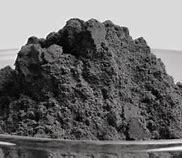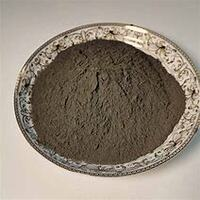1. Introduction
On May 27, 2024, the U.S. Department of Commerce updated its export control guidelines for reactive metal powders, including titanium powder, citing national security and supply chain integrity concerns. This move affects global manufacturers, especially those sourcing titanium powder for additive manufacturing. Given titanium powder’s growing role in aerospace, medical implants, and defense, understanding how to properly handle, store, and apply it is more critical than ever.

Titanium powder—also referred to as ti powder or titanium metal powder—is a fine, reactive material used in everything from 3D printing to pyrotechnics. However, improper handling can lead to fire hazards, health risks, or compromised product quality. This guide provides a step-by-step approach to working safely and effectively with titanium powder and related variants like ti64 powder, tio2 nano powder, and titanium diboride powder.
2. Understand the Types and Uses of Titanium Powder
Not all titanium powders are the same. Selecting the right type depends on your application:
- Pure titanium powder: Used in chemical processing and research.
- Ti6Al4V powder (also called ti64 powder): The most common titanium alloy powder for 3D printing titanium powder applications in aerospace and biomedical devices.
- Spherical titanium powder: Ideal for titanium powder additive manufacturing due to its flowability and packing density.
- HDH titanium powder (Hydride-Dehydride): Irregular-shaped, cost-effective for pressing and sintering.
- Gas atomized titanium powder: High-purity, spherical particles preferred in high-performance 3D printing.
- TiO2 powder and tio2 nano powder: Used in cosmetics, sunscreens, and coatings—not for metal fabrication.
- Titanium nitride powder, titanium carbide powder, titanium diboride powder (tib2 powder), and titanium boride powder: Advanced ceramics for cutting tools and wear-resistant coatings.
- Titanium flash powder and burnt titanium powder coat: Pyrotechnic or surface treatment applications—handle with extreme caution.
Always verify the material specification before purchasing. For example, titanium powder for 3d printing must meet ASTM or ISO standards for particle size distribution and oxygen content.

3. Safe Handling and Storage Protocols
Titanium dust is highly flammable and can be pyrophoric in fine particle form. Follow these safety steps:
- Work in a well-ventilated, inert atmosphere (e.g., argon or nitrogen glovebox) when handling fine ti powder.
- Use explosion-proof equipment and grounded containers to prevent static discharge.
- Never use water to extinguish titanium powder fires—use Class D fire extinguishers.
- Store in sealed, airtight containers away from oxidizers, moisture, and heat sources.
- Wear appropriate PPE: flame-resistant lab coat, nitrile gloves, and N95 or higher respirators.
Note: TiH2 powder (titanium hydride) is often used as a safer alternative in some metallurgical processes because it’s less reactive until heated.
4. Sourcing and Cost Considerations

When you buy titanium powder, price varies significantly based on purity, morphology, and alloy composition. As of mid-2024:
- Titanium powder price per kg ranges from $80 to $300 for pure grades.
- Ti6Al4V powder price typically falls between $200–$450/kg, depending on sphericity and certification.
- 3D printing titanium powder price is higher for gas-atomized, low-oxygen batches.
To get the best titanium powder cost value, compare quotes from reputable titanium powder suppliers such as international titanium powder vendors or specialized additive manufacturing material providers. Always request certificates of analysis (CoA) for oxygen, nitrogen, and particle size.
Beware of misleading listings: Some sellers advertise ‘titanium powder for sale’ but actually offer tio2 powder, which is non-metallic and unsuitable for metal 3D printing.
5. Common Mistakes and How to Avoid Them
Many users encounter issues due to oversight:
- Using non-spherical powder in laser powder bed fusion (LPBF) leads to poor layer uniformity. Always choose spherical titanium powder for 3D printing.
- Storing titanium powder near tungsten powder or molybdenum powder without segregation can cause cross-contamination. Though moly powder and tungsten metal powder are also used in high-temp applications, they require separate handling protocols.
- Confusing titanium dioxide powder with metallic titanium powder—tio2 is inert and used in food or cosmetics; it cannot be used in additive manufacturing.
- Ignoring moisture exposure: Even brief humidity contact can oxidize ti powder, increasing oxygen content and degrading print quality.
6. Applications Beyond 3D Printing
While titanium powder for 3d printing dominates headlines, other uses include:
- Titanium coated diamond powder for abrasive tools.
- Titanium nanopowder in catalysis and sensors.
- Blending with molybdenum disulfide powder (mos2 powder) or tungsten disulfide powder (ws2 powder) for solid lubricant composites.
- Research into titanium-tungsten or titanium-molybdenum alloys using tzm powder or molybdenum carbide powder for extreme environments.
Note: Molybdenum powder uses and tungsten powder uses often overlap with titanium in high-performance alloys, but each requires distinct processing parameters.
7. Conclusion
Working with titanium powder demands respect for its reactivity, precision in material selection, and diligence in safety. Whether you’re sourcing ti6al4v powder for aerospace components or evaluating titanium powder price per kg for R&D, always prioritize certified suppliers, proper storage, and application-specific powder morphology. With additive manufacturing demand rising, understanding these fundamentals ensures both safety and performance.
Our Website founded on October 17, 2012, is a high-tech enterprise committed to the research and development, production, processing, sales and technical services of ceramic relative materials such as How. Our products includes but not limited to Boron Carbide Ceramic Products, Boron Nitride Ceramic Products, Silicon Carbide Ceramic Products, Silicon Nitride Ceramic Products, Zirconium Dioxide Ceramic Products, etc. If you are interested, please feel free to contact us.
